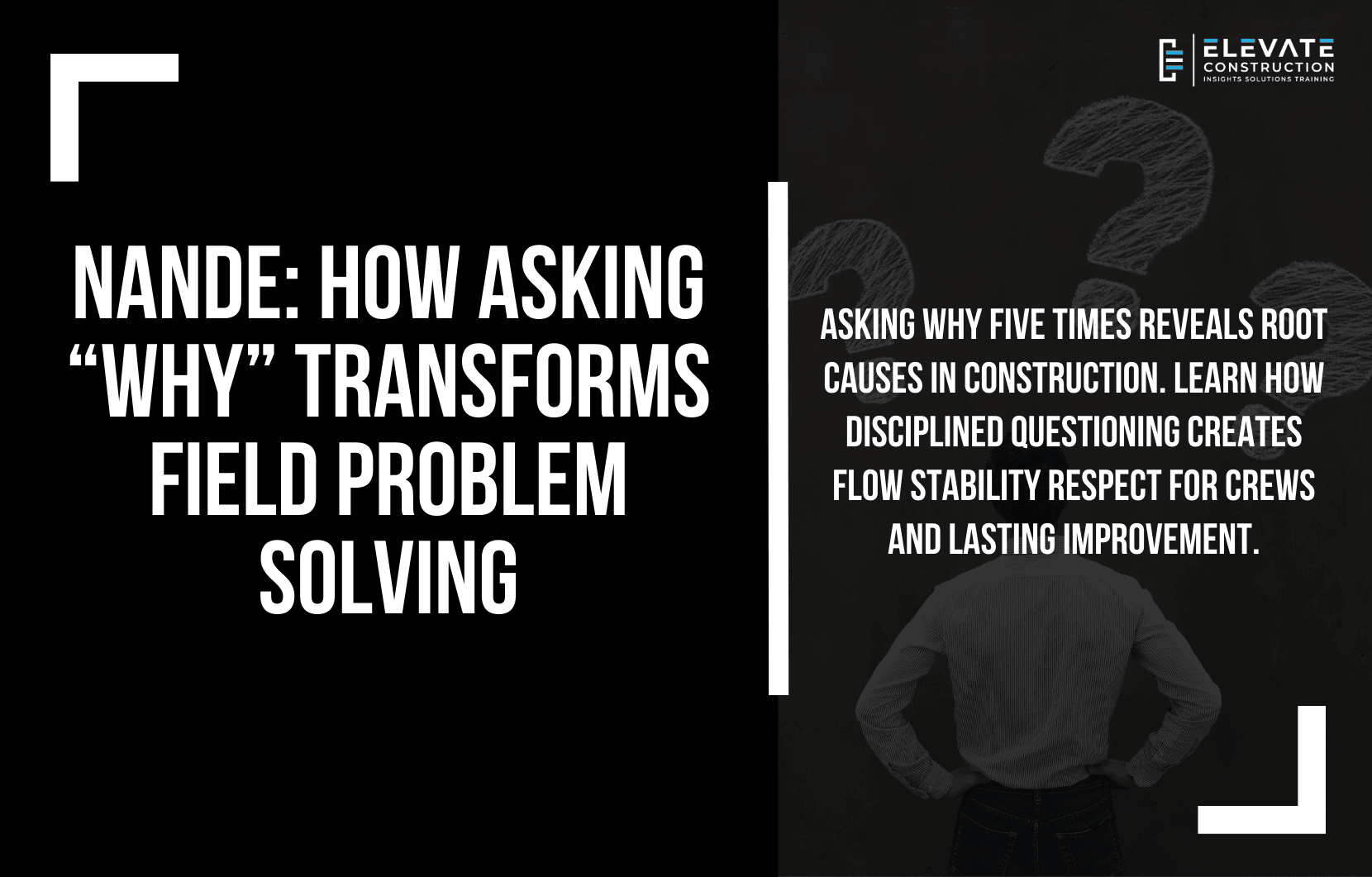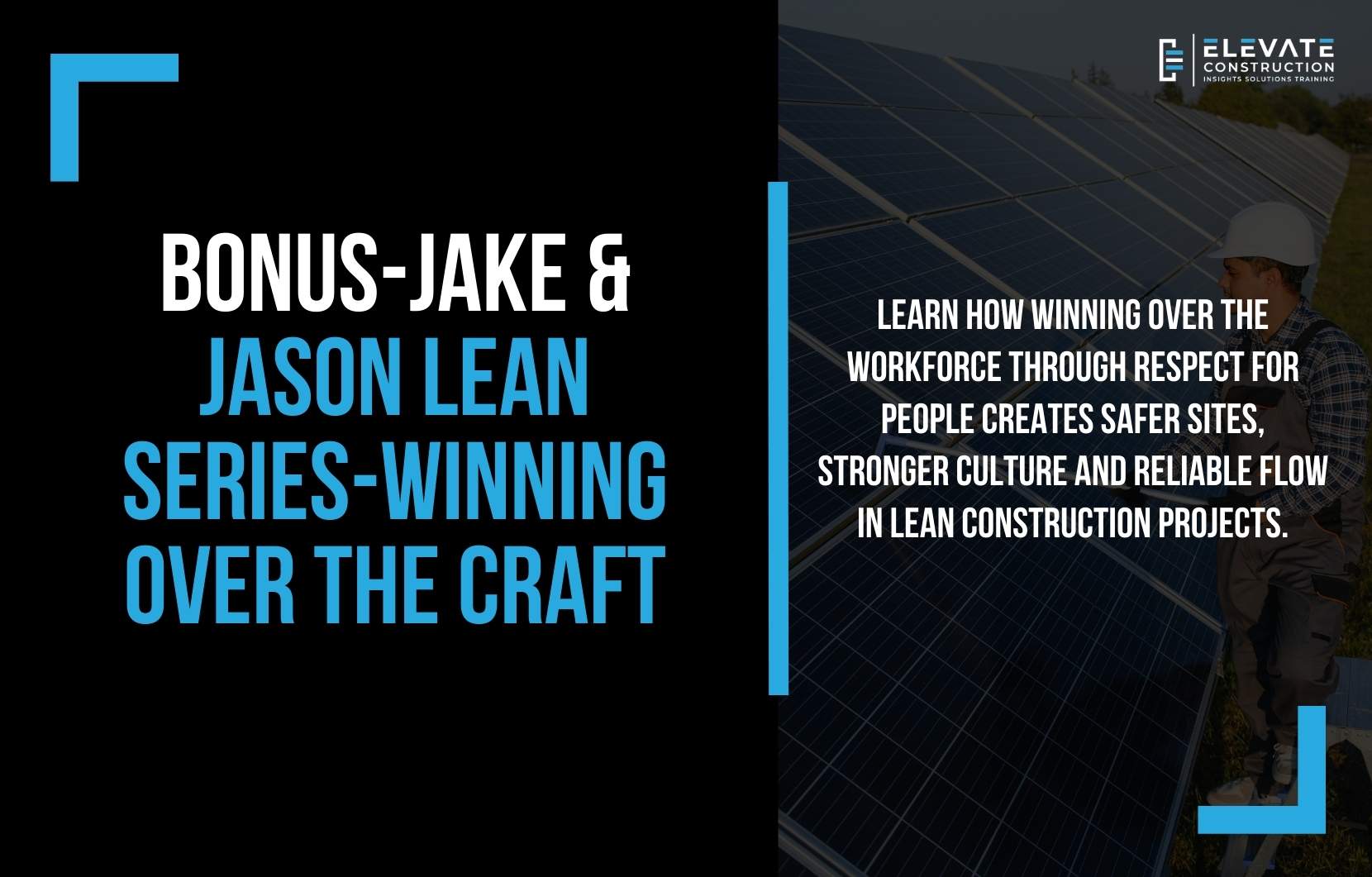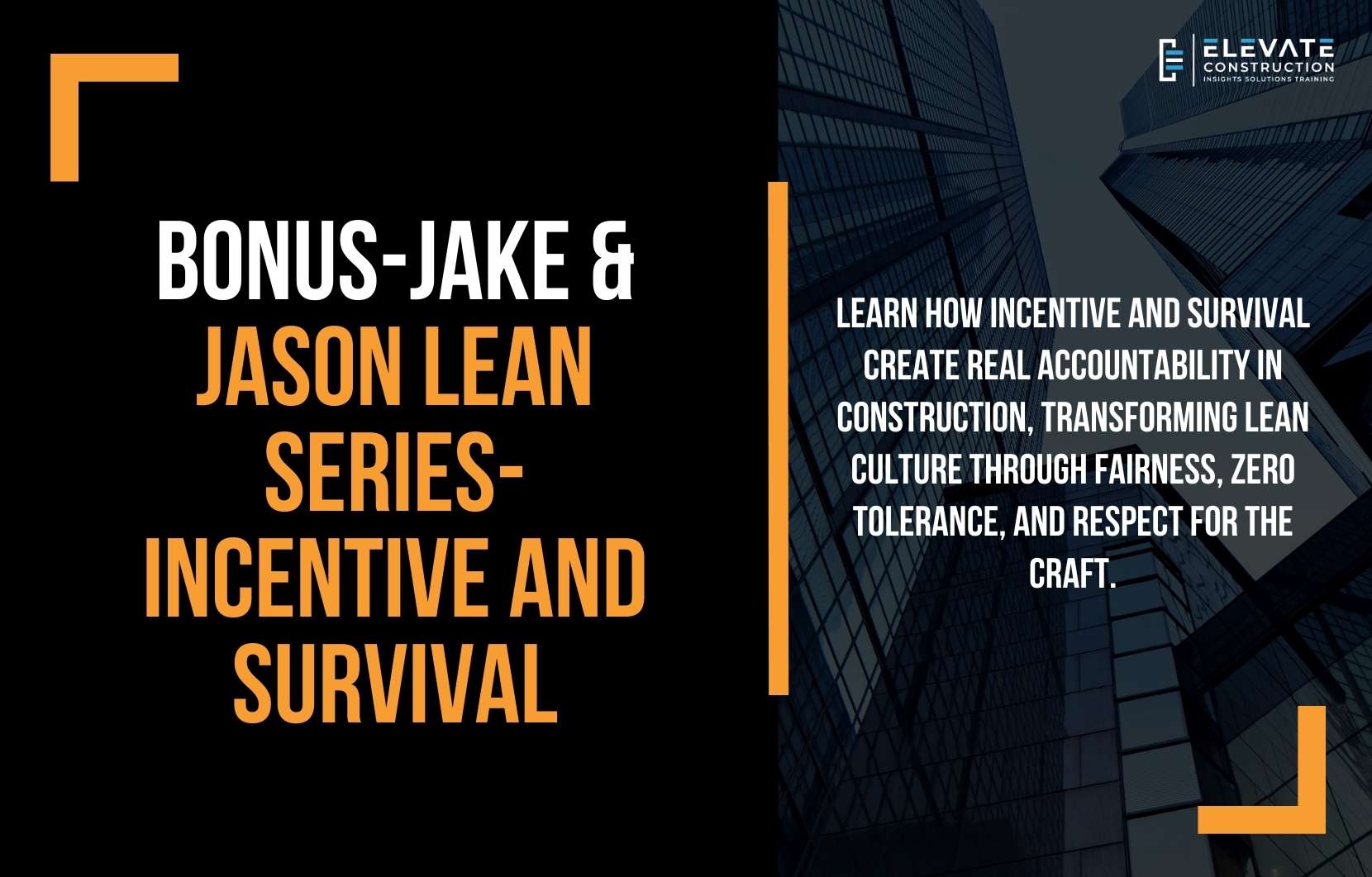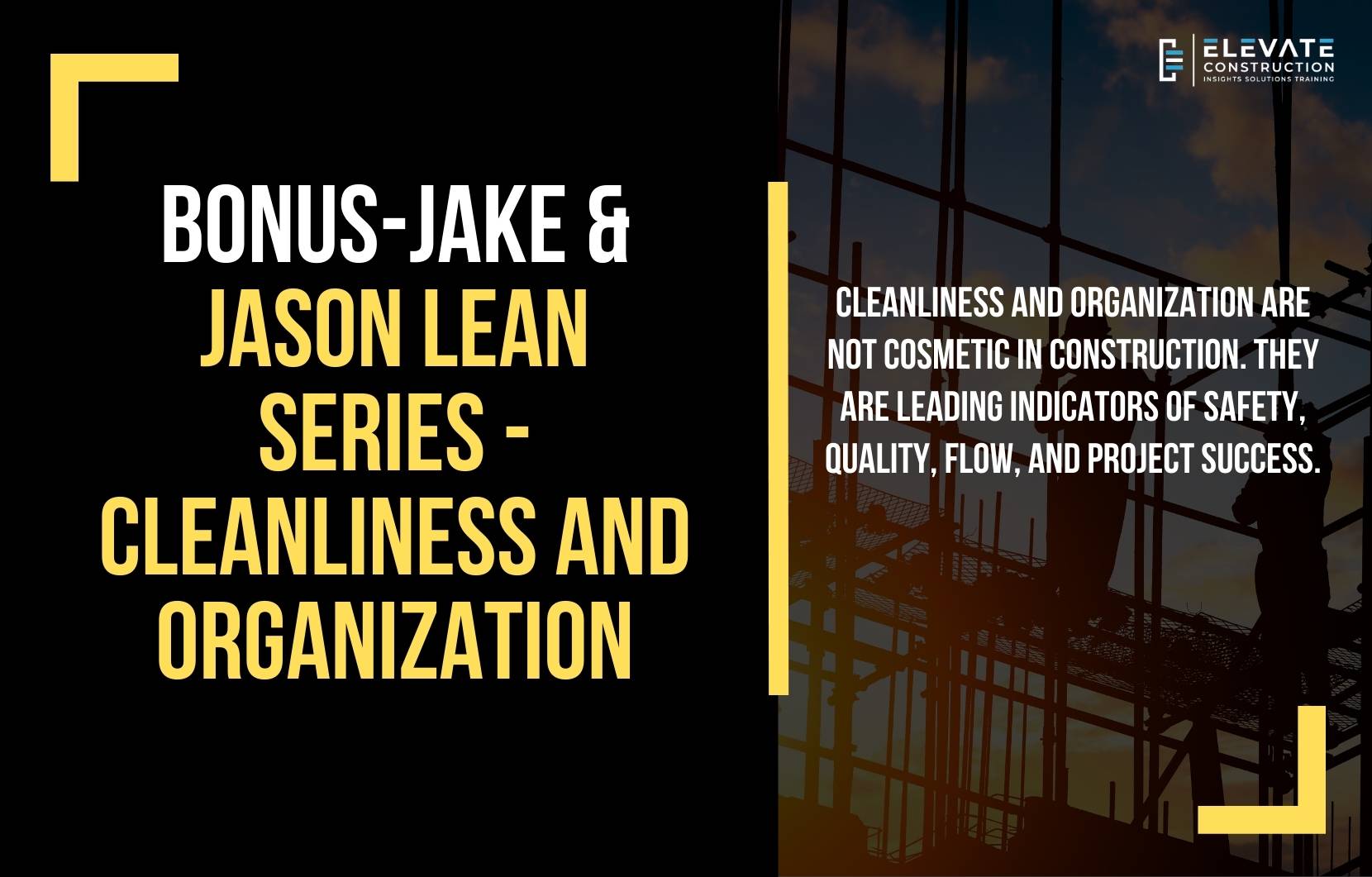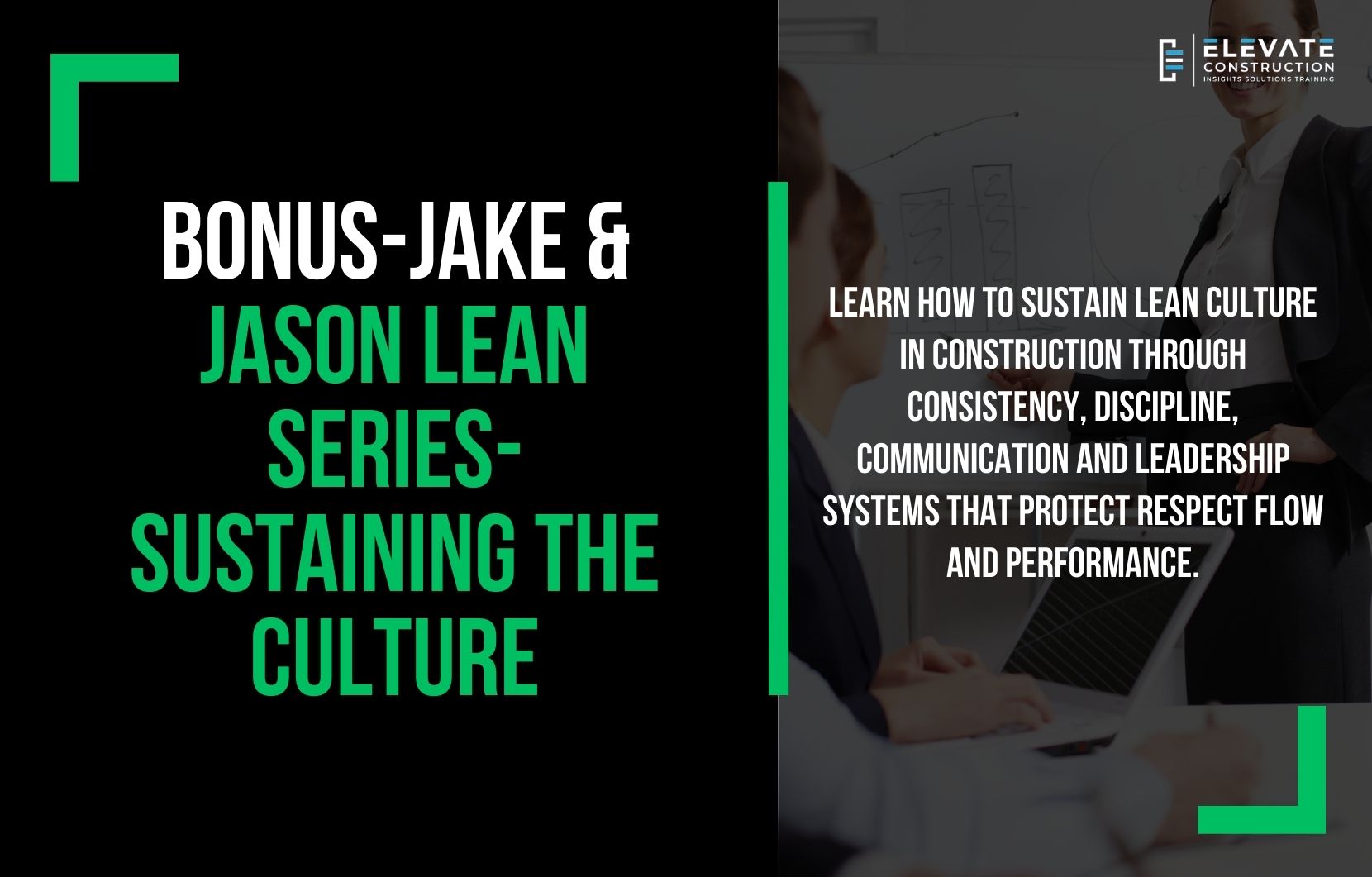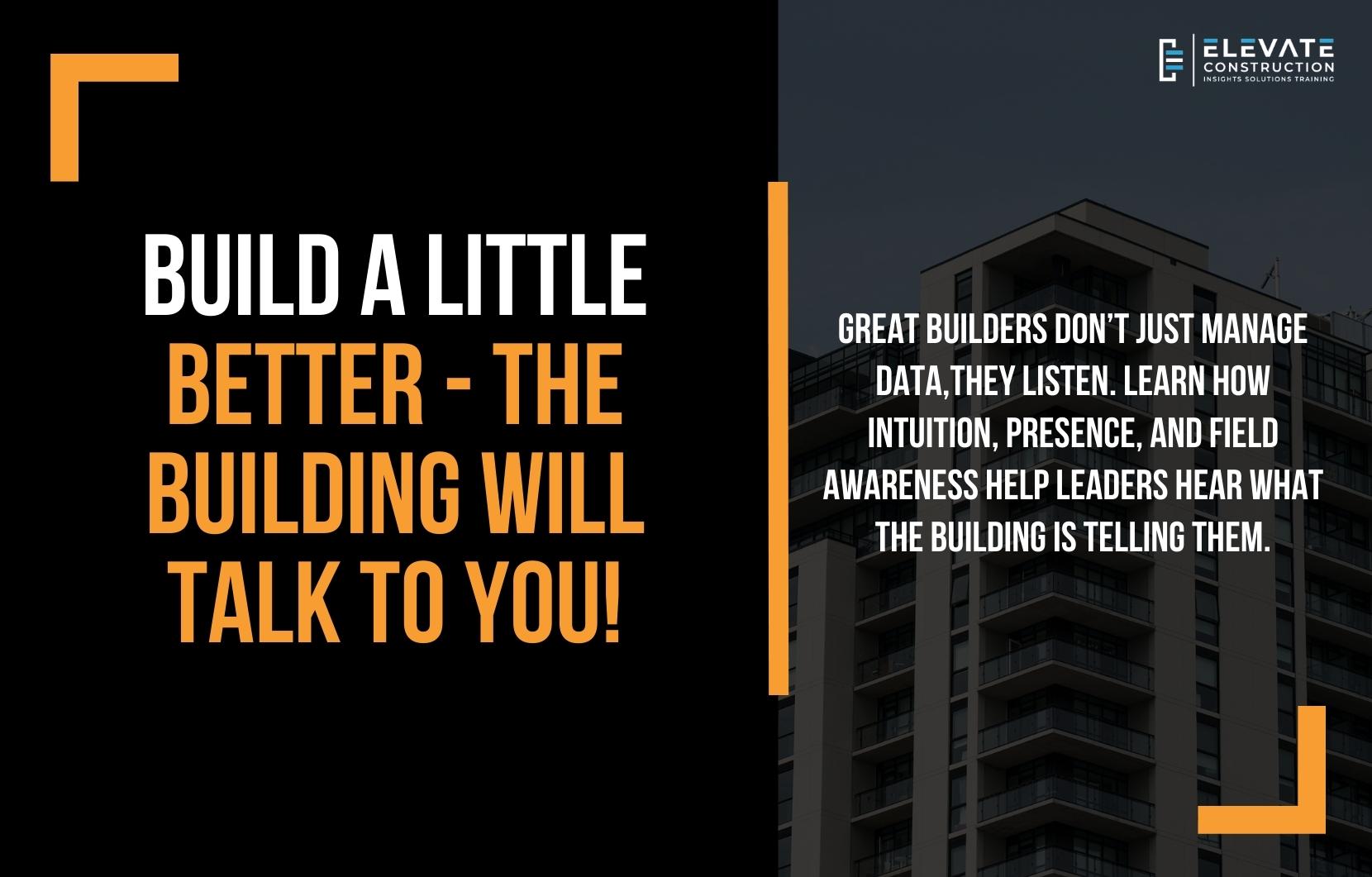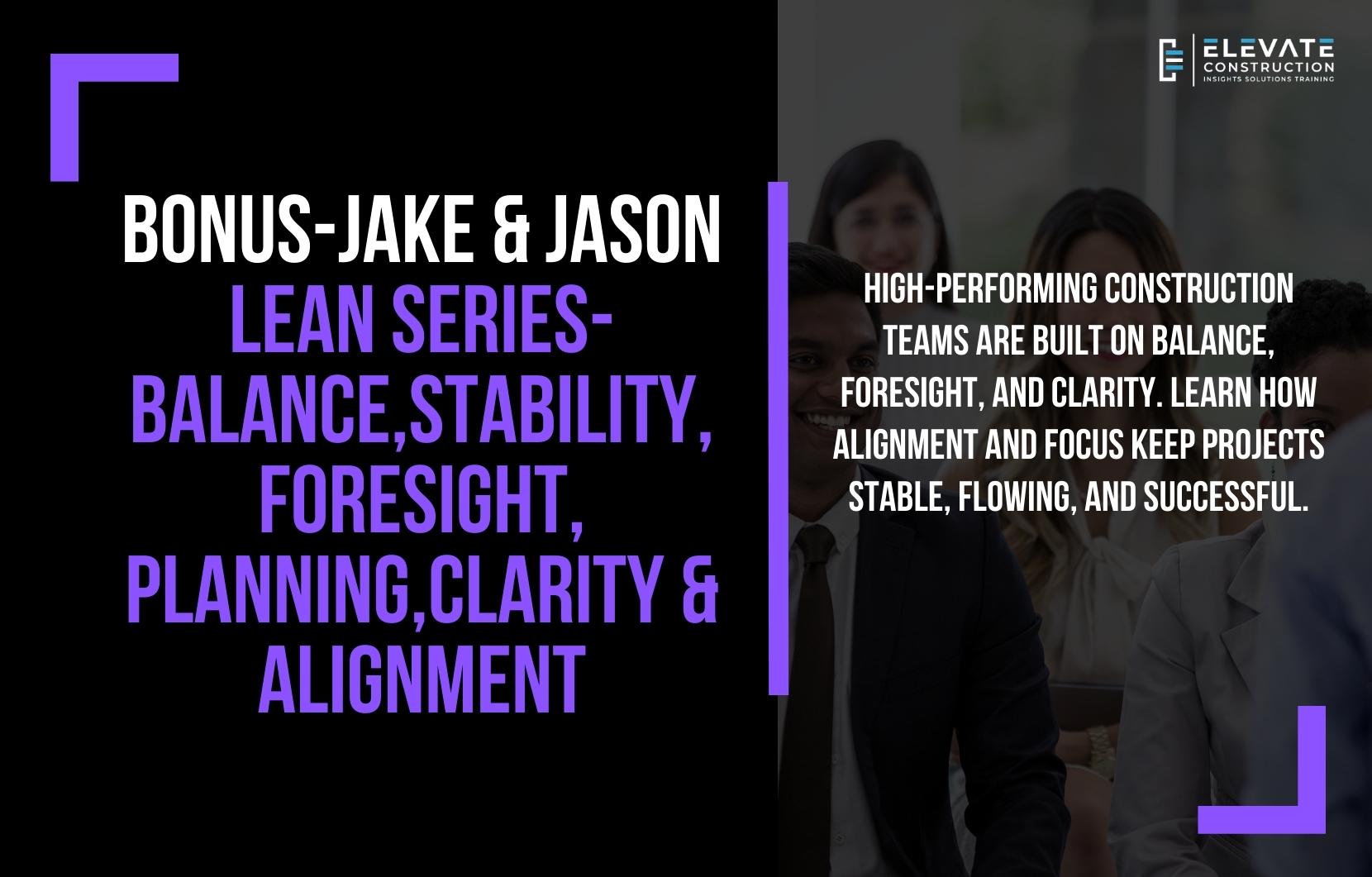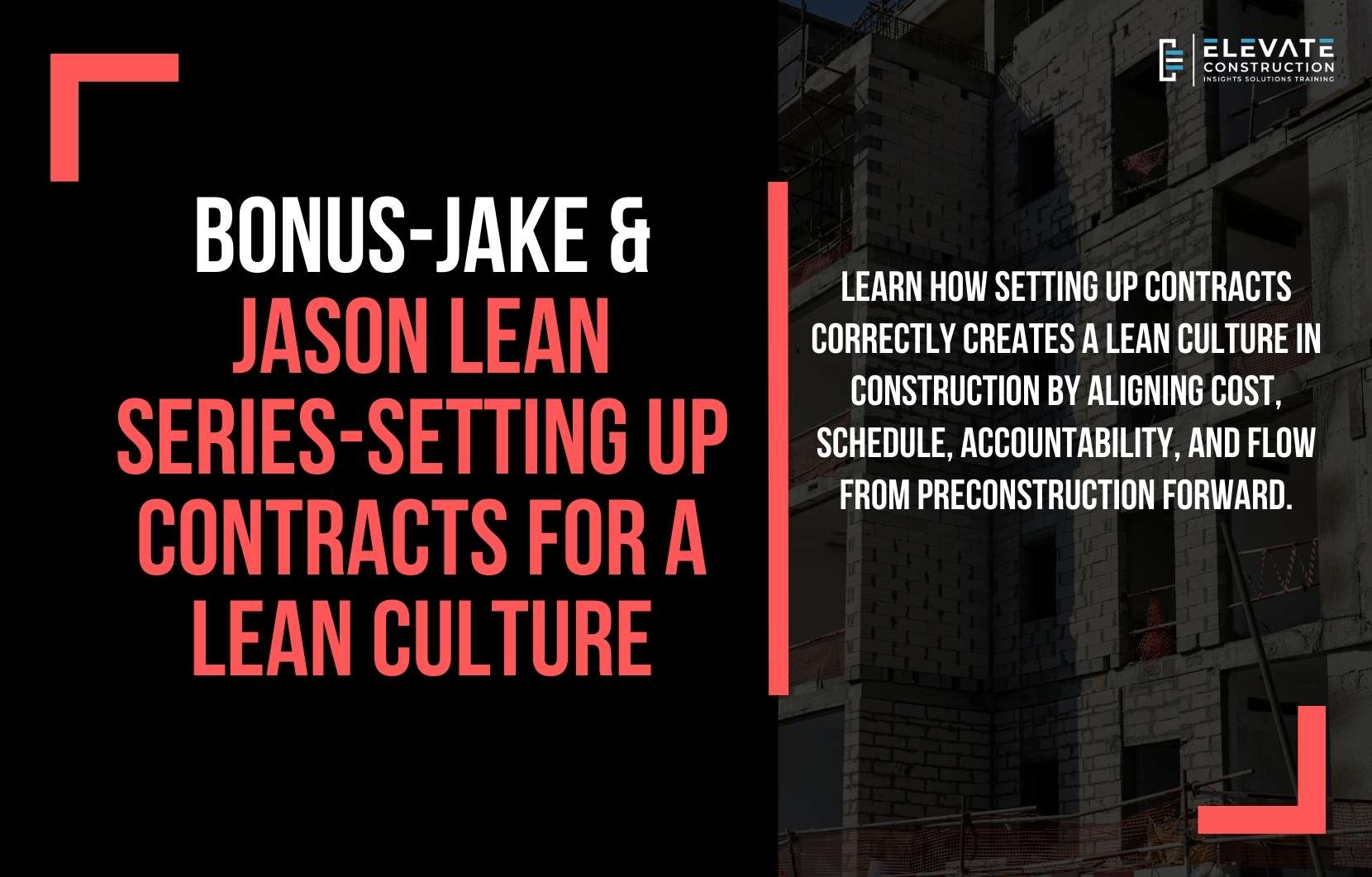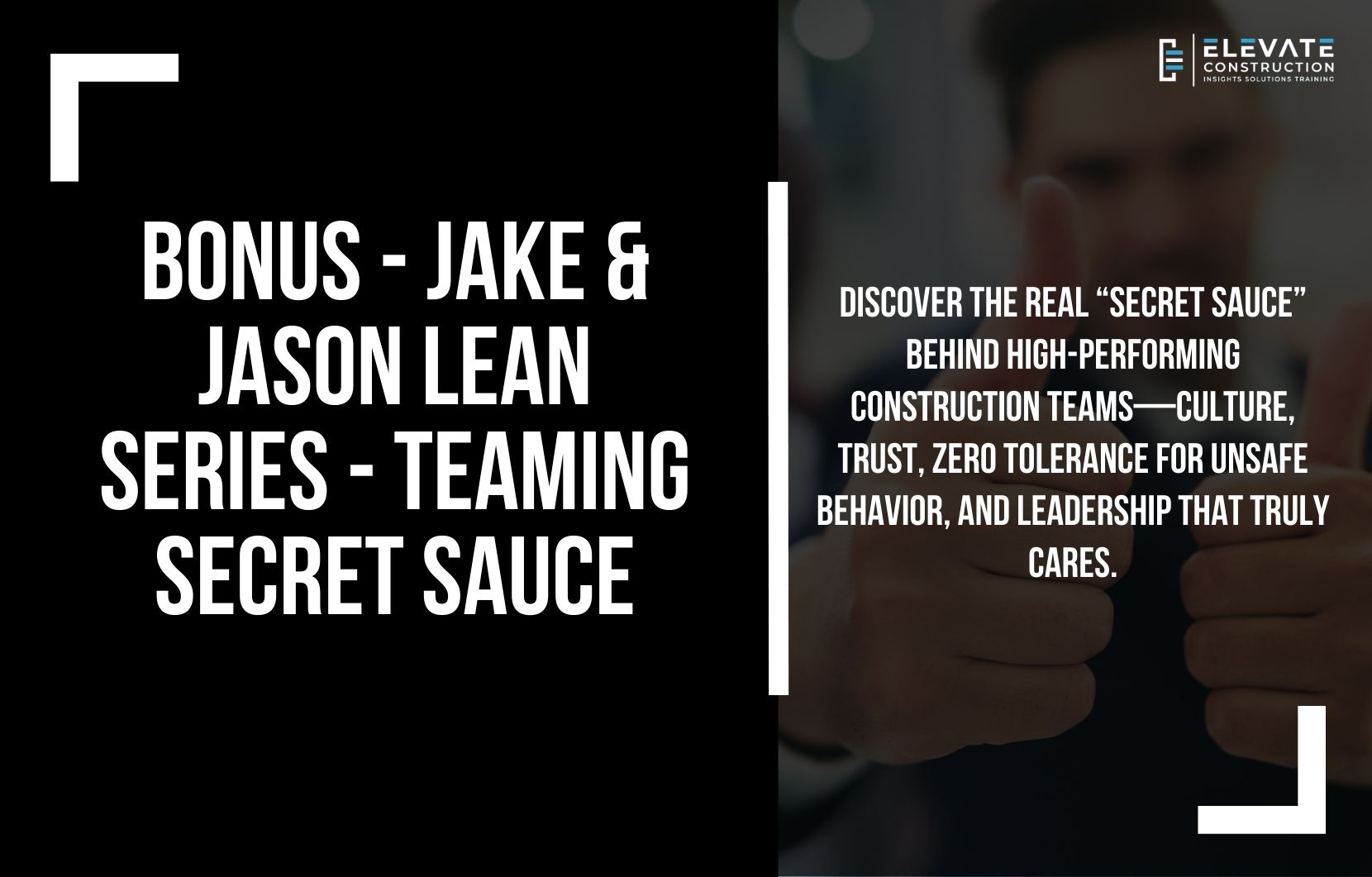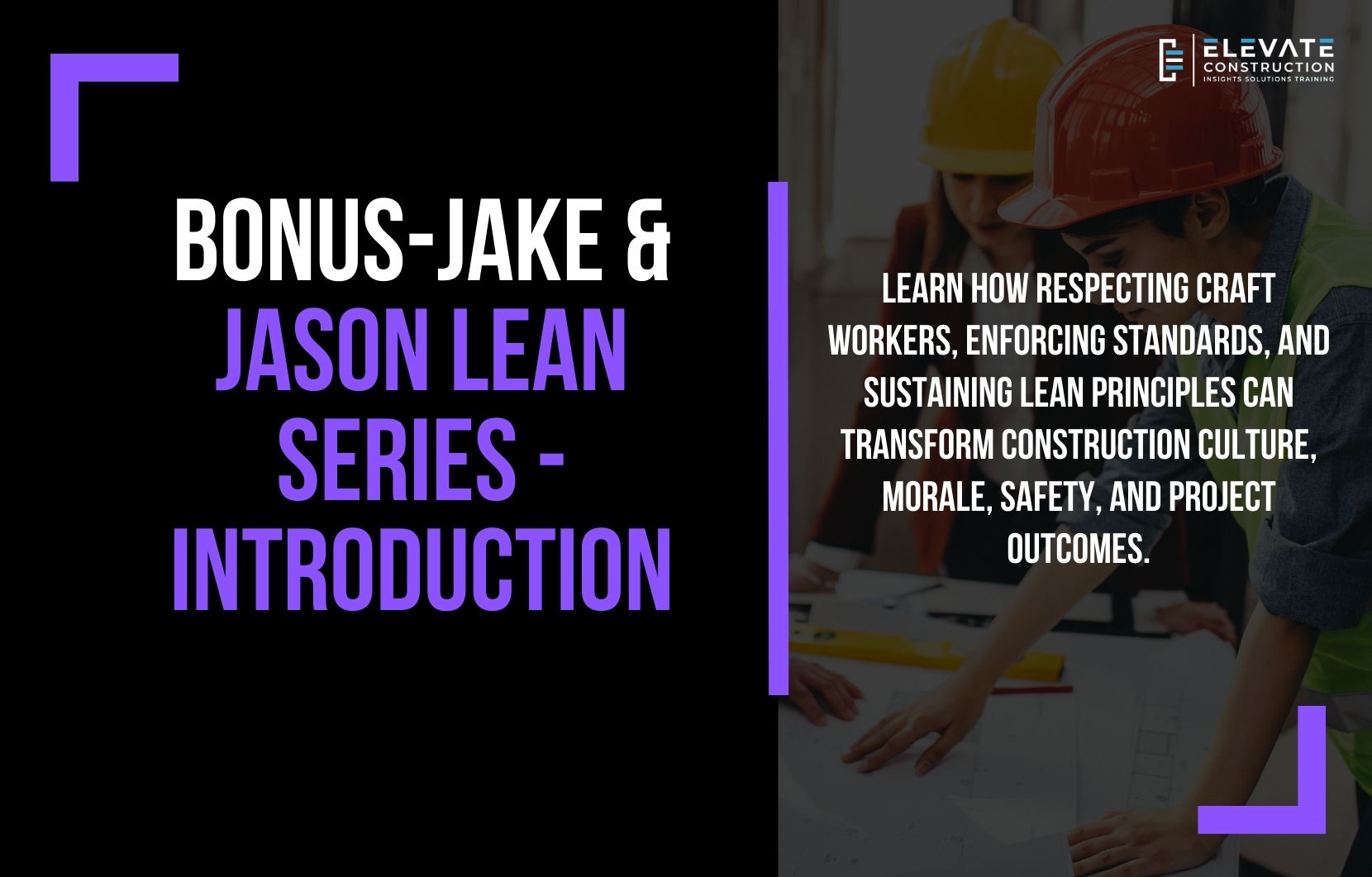Why Most Construction Problems Never Really Get Solved
Every construction leader has felt it. The project is behind. Crews are frustrated. The same issues keep coming back under different names. Something goes wrong in the field and everyone rushes to fix it as fast as possible. The problem gets patched. The schedule limps forward. Then the same failure shows up again a week later somewhere else.
This is one of the most common pains in construction. We move fast. We react faster. And we rarely slow down long enough to understand what actually caused the issue in the first place.
That pattern is not a people problem. It is a thinking problem.
At Elevate Construction we see this everywhere. Smart builders working hard with good intentions get trapped in a cycle of reaction because the system rewards speed over understanding. The result is rework stress burnout and lost trust between the office and the field.
The good news is that there is a simple discipline that breaks this cycle. It does not require new software or more meetings. It requires better questions.
The Failure Pattern We Rarely Talk About
When something goes wrong on a project the first instinct is to ask who messed up or how fast can we fix it. The conversation usually stops at the first answer that sounds reasonable. The installation was wrong. The material was late. The drawing was unclear. The foreman missed it.
That is where most teams stop thinking.
The failure pattern is shallow problem solving. We accept the first explanation and move on. We treat symptoms instead of causes. We reward firefighting instead of prevention. Over time the project becomes unstable because the same underlying constraints never get addressed.
Leaders feel pressure to have answers immediately. Extroverted decisive personalities often dominate construction culture and that is not a bad thing. We need action. But action without understanding creates motion not progress.
Why This Is Not About Blame
If you have ever felt defensive when someone keeps asking why you are not alone. Many of us were trained to associate questioning with criticism. In reality disciplined questioning is a form of respect.
When we stop at the surface explanation, we often end up blaming people. When we go deeper, we almost always discover a system issue. Information arrived late. The sequence was wrong. The process made it hard to succeed.
This is where trust gets rebuilt. Crews feel respected when leaders seek to understand instead of accuse. Superintendents gain credibility when they fix causes instead of issuing reminders.
A Field Story About Asking Why
I learned this lesson the hard way. Early in my career I was the kind of leader who moved fast and trusted my instincts. If something went wrong I already had the solution in my head before the conversation even started. I was efficient and completely ineffective.
One day an installation went in wrong. I was ready to correct it immediately. Someone quieter on the team kept asking why. At first it was annoying. Then it became uncomfortable. Then it became obvious that my solution would have guaranteed the problem returned.
By the time we worked backward through the process we discovered the issue was created upstream. A detail that had been carried forward unchecked made failure inevitable. Fixing the install would have masked the waste. Fixing the process eliminated it.
That was my introduction to disciplined root cause thinking and it changed how I lead.
Asking Why Is a Leadership Skill
There is a Japanese term often translated as asking why five times. It is not about the number. It is about persistence. You keep asking until the real cause reveals itself.
This approach shifts teams from spot fixes to system improvement. It moves organizations from reaction to prevention. It teaches people how to think instead of what to do.
When practiced consistently this habit changes culture. Teams stop hiding problems. They start surfacing them early. Learning replaces blame. Improvement becomes normal.
This is real lean thinking. Not slogans. Not tools. Thinking.
At the heart of LeanTakt this way of thinking stabilizes flow by removing constraints instead of working around them. When constraints are addressed, upstream work downstream becomes predictable and calm.
What Changes When Teams Learn to Ask Better Questions
When leaders model this behavior, several things start to happen naturally.
- Problems stop bouncing back in different forms because the cause is removed
- People feel safer speaking up because curiosity replaces judgment
- Field teams begin solving problems on their own instead of waiting for answers
These are not soft outcomes. They are operational advantages. Schedules stabilize. Rework drops. Trust increases.
From Firefighting to Flow
Most construction delays are not caused by a lack of effort. They are caused by unresolved constraints. Every system has one. Sometimes it is information. Sometimes it is decision timing. Sometimes it is trade coordination.
Asking why repeatedly exposes the constraint. Once the constraint is visible the team can focus improvement energy where it matters most. This is how flow is created.
Flow is not speed. Flow is stability. Stability comes from understanding.
This is where superintendent coaching and leadership development make a measurable difference. When leaders are trained to think systemically the entire project benefits. Crews experience fewer surprises. Planning becomes reliable. Respect becomes visible.
If your project needs superintendent coaching project support or leadership development Elevate Construction can help your field teams stabilize schedule and flow.
How This Habit Gets Embedded
This way of thinking does not happen by accident. It is taught practiced and reinforced. Leaders must slow the conversation down long enough to learn. Meetings must allow thinking time. Introverted analytical voices must be given space.
When this habit becomes part of daily work people stop waiting for direction. They start improving the system themselves. That is how organizations scale excellence.
This is also why training matters. Not training that dumps information but training that reshapes thinking. This is the work we do at Elevate Construction every day.
Respect for People Is Respect for Thinking
One of the deepest lessons from lean leadership is respect for people. That respect shows up when leaders trust teams to think. Asking why is an invitation to think.
When workers see leaders invest time in understanding problems they respond with engagement. Pride returns to the work. Stability replaces chaos.
This is not theory. It is field proven. It works on small projects and megaprojects alike.
Connecting Back to the Mission
The mission of Elevate Construction is simple. Elevate people. Elevate projects. Elevate the industry.
We do that by teaching leaders how to think clearly under pressure. How to remove constraints instead of working around them. How to create environments where people can succeed.
Asking why is one of the most powerful habits a builder can develop. It turns problems into progress and teams into systems thinkers.
As I often say improvement is not about working harder. It is about seeing clearer.
A Challenge for Builders
The next time something goes wrong resist the urge to solve it immediately. Ask why. Then ask again. And again. Stay curious long enough to find the real cause.
As Deming taught most problems belong to the system not the people. When we fix the system, we honor the people.
That is how remarkable projects are built.
Frequently Asked Questions
What does asking why five times actually accomplish in construction
It helps teams move past surface explanations and identify the true root cause of problems so they do not return later in another form.
Is this approach too slow for fast paced projects
No. While it feels slower in the moment it saves significant time by eliminating recurring issues rework and firefighting.
How does this relate to LeanTakt and flow
LeanTakt relies on stable systems. Asking why removes constraints that disrupt flow and planning reliability.
Can field crews really engage in this level of problem solving
Yes. When leaders create psychological safety and model curiosity crews consistently provide the most accurate insights.
How can organizations build this habit at scale
Through leadership coaching structured reflection and training that focuses on thinking not just tools
If you want to learn more we have:
-Takt Virtual Training: (Click here)
-Check out our Youtube channel for more info: (Click here)
-Listen to the Elevate Construction podcast: (Click here)
-Check out our training programs and certifications: (Click here)
-The Takt Book: (Click here)
Discover Jason’s Expertise:
Meet Jason Schroeder, the driving force behind Elevate Construction IST. As the company’s owner and principal consultant, he’s dedicated to taking construction to new heights. With a wealth of industry experience, he’s crafted the Field Engineer Boot Camp and Superintendent Boot Camp – intensive training programs engineered to cultivate top-tier leaders capable of steering their teams towards success. Jason’s vision? To expand his training initiatives across the nation, empowering construction firms to soar to unprecedented levels of excellence.
On we go

